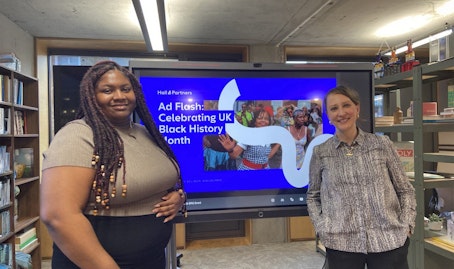
Leadership comes from many corners. And as technology reshapes the face of healthcare, my passion as a pharmaceutical marketing researcher has often compelled me to seek leaders out to examine their instincts for smart risk.
ResMed – a leading connected health and digital technology company focused on sleep apnea, COPD and other respiratory conditions – first caught my eye in 2012. With the launch of its AirSense 10 CPAP machine (continuous positive airway pressure for sleep apnea), ResMed had announced a bold new commitment: to embed connectivity in all its devices. It was first in its category.
In her customer insights role, Erika Rodman designs research to identify needs and more deeply understand where trends are leading. I wanted to hear how connectivity had evolved the experience of CPAP patients and the caregivers who monitor home medical equipment use (HMEs). I found her eager to imagine new possibilities.
MARGARET: WHAT INSPIRED RESMED’S LEAP INTO THE CONNECTED SPACE?
Erika: We had an idea about enabling remote monitoring for CPAP patients. Wearing a mask every night is hard to get used to, but in order for the HME to get paid for the equipment or reimbursed by insurance companies, patients have to be compliant on therapy. Before the AirSense 10, the patient either had to bring their device, or send its SD card, to the HME’s office, or the HME had to travel to the patient’s home to get that data. Cloud connectivity enables data to safely travel from the device directly to the HME – or a patient’s physician – without anyone having to spend either the extra time or effort.
MARGARET: HOW DOES THE CONNECTIVITY WORK?
Erika: As the patient uses the device, a cellular chip is automatically transmitting nightly usage data to the Cloud. With the patient’s permission, it’s sent to a digital platform that medical providers can access to monitor data in real time. The data includes things like the number of hours patients used their CPAP, or if they suffered mask leaks. We also launched MyAir, a patient engagement app that empowers patients to monitor their own data.
MARGARET: HAS CONNECTIVITY HAD AN IMPACT ON COMPLIANCE?
Erika: Yes. A 2016 CHEST study showed CPAP patients were 87% compliant on therapy when both remotely monitored and self-monitored, compared to roughly half that number on non-Cloud-connected devices. Plus, in a 2015 Sleep and Breathing study, clinicians saved nearly 60% on time needed to manage patients when they were remotely monitored. So, connected health solutions are truly a win-win for patients and their equipment providers.
MARGARET: HAVE INSIGHTS FROM THE DATA IMPACTED RESMED’S PRODUCTS?
Erika: Most certainly. We now have data on more than 2.5 billion nights of sleep and are using it to innovate new products and solutions. We’re also using data to help our HME customers better serve patients. As they monitor patients over a longer period, I can see us using that data to identify types of patients that are more likely to be non-compliant – using factors such as gender, ethnicity, weight, etc.
MARGARET: LET’S TALK ABOUT THE LONGER TERM. WHAT ARE YOUR HOPES AND EXPECTATIONS FOR WHERE CONNECTIVITY WILL TAKE HEALTHCARE?
Erika: The industry doesn’t focus on long-term care right now, and I think more people are becoming aware that it should. I’ve been talking about [initial] compliance, but we want patients engaged long-term – there’s a whole bunch of comorbidities connected with sleep apnea. There’s also a lot of movement with how companies like Google use data, and now Amazon is getting into healthcare. The big guys are looking to keep transforming healthcare, and ResMed will continue to help lead in this space.








